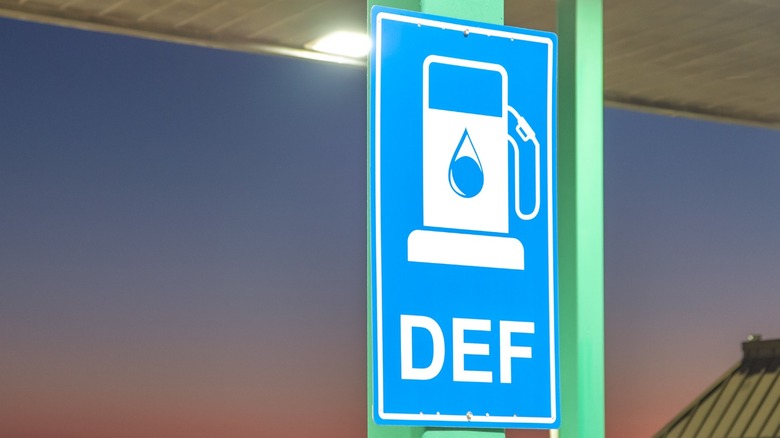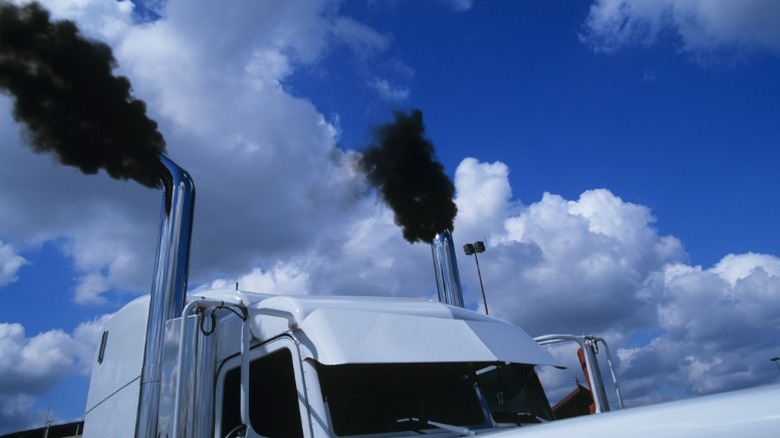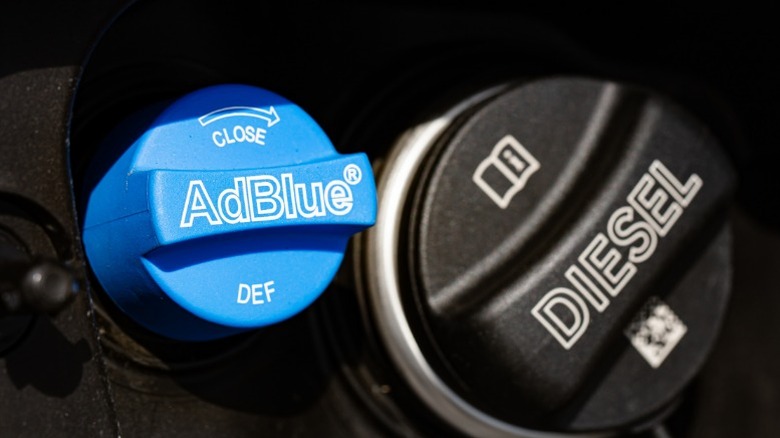What Exactly Is DEF & What Does The Acronym Stand For?
The modern world relies on vehicles of all kinds for everything from personal transportation to the facilitation of international trade. These vehicles — which range from passenger cars and SUVs to diesel semi trucks, airplanes, and cargo ships — are extremely impressive feats of engineering and have had an immense impact on contemporary life. However, they do have a downside: namely, the harmful emissions they frequently expel into our atmosphere.
Fortunately, the transportation industry has come a long way in recent decades, especially when it comes to automobiles. Through the use of anti-pollution legislature, like the Clean Air Act, and modern automotive technology, like catalytic converters, the vehicles we drive are more efficient and eco-friendly than ever. While some of the first mainstream advancements in emissions-busting tech targeted gas-powered cars, the diesel industry is catching up, and today, new diesel vehicles are required to use DEF to curb emissions.
If you're not involved in the car world, and you don't own a modern diesel vehicle, you may have never heard of DEF. Alternatively, if you do own a newer diesel vehicle or are in the market for one, you may be curious about what DEF is and what the acronym means. The letters DEF stand for diesel exhaust fluid. Sometimes, you'll hear people refer to it as DEF fluid, and all three formats are acceptable. If you're interested in learning more about DEF, how it works, and what vehicles must use it, stick around. Here's the scoop on DEF.
Diesel exhaust fluid is designed to reduce emissions
Diesel exhaust fluid or DEF is a mixture of industrial urea and deionized water. The solution is designed to work with selective catalytic reduction (SCR) systems in order to cut down on diesel emissions. While all internal combustion engines create emissions, diesel emissions are particularly concerning, due to the way diesel engines work. Instead of relying on a spark plug to create explosions and drive the pistons, diesel engines rely on highly-pressurized fuel injection and compression to ignite the air/fuel mixture.
This process generates extremely toxic NOx or nitrous oxide emissions, which automakers traditionally tried to combat by recirculating those harmful gasses back through the engine. However, that method can also reduce engine performance and lower the temperature inside the engine, resulting in more unburned fuel escaping the engine in the form of soot. Selective catalytic reduction systems and diesel exhaust fluid are a modern solution to this problem.
Instead of rerouting harmful pollutants back through the engine and simultaneously reducing the vehicle's performance and increasing soot output, SCR systems introduce DEF to exhaust gasses as they leave the engine. The urea in the DEF mixes with the NOx and undergoes a chemical reaction, forming ammonia. The ammonia and other exhaust gasses then pass through the SCR catalyst, which turns the ammonia into regular water vapor and nitrogen. Those chemicals then leave the exhaust system and mix into the atmosphere, which is immensely preferable to pumping our air full of harmful NOx.
What vehicles use DEF?
As you may have guessed, DEF is designed for use in vehicles that rely on diesel for fuel instead of gas. However, not all diesel vehicles are required or equipped to use DEF, and automobiles aren't the only forms of diesel machinery that use the emissions-busting solution.
In 2010, the Environmental Protection Agency (EPA) mandated that all new diesel vehicles must use DEF to cut down on harmful emissions. That ruling applies to passenger diesel vehicles, like Ford, Ram, and GM pickup trucks, as well as the heavy-duty semi trucks that carry goods across the country. The solution is widely used outside automotive applications, too, with various forms of construction and agricultural machinery adopting the use of DEF. Those guidelines mean that if you own a diesel vehicle built after 2010, you are required by law to use DEF. In 2014, the EPA revised its guidelines on DEF to include DEF refill intervals. Depending on the type of diesel vehicle you own, you may need to refill your DEF tank every 4,000 miles, at a minimum.
That said, there is currently some confusion surrounding the use of DEF, thanks to statements made by Donald Trump's newly-appointed EPA head. In March, Lee Zeldin, head of Trump's EPA, announced that it will be reconsidering various regulations put in place by previous administrations and alluded to deregulations covering everything from air toxicity standards to vehicle emissions guidelines. Many diesel enthusiasts are celebrating this news under the assumption that it will eliminate regulations like those requiring the use of DEF. However, that doesn't mean you should stop using these components. Not only are they vital for the protection of our environment, but also, as of right now, they're still a legal requirement.


